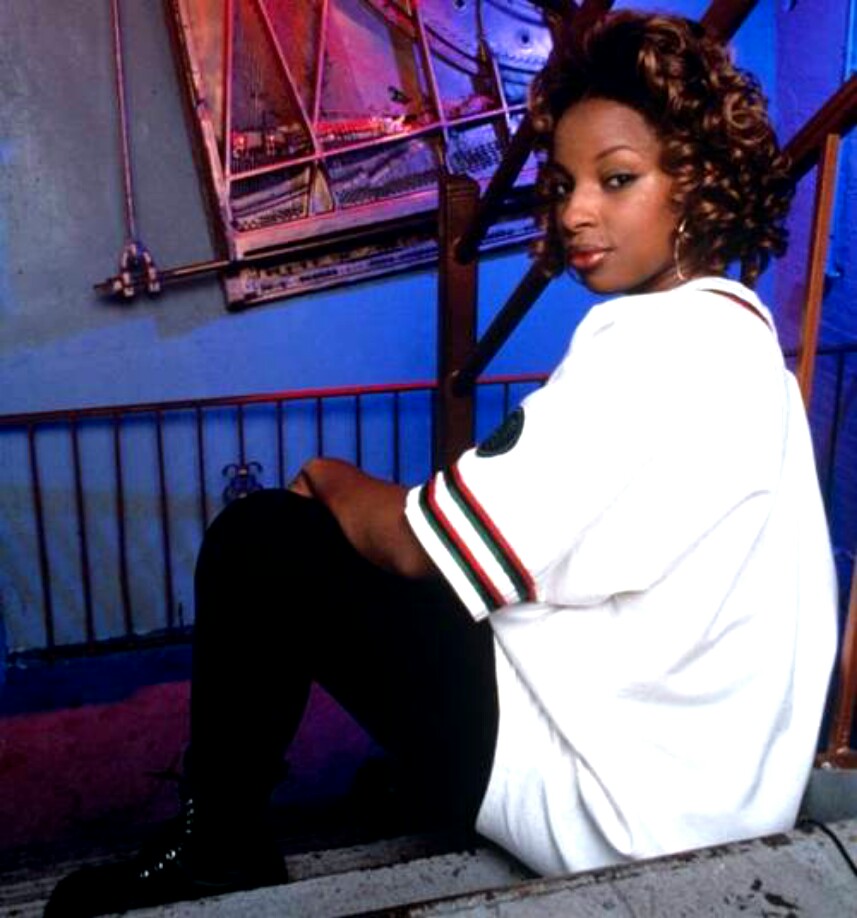by Nadirah Simmons
In 1988, Mary J. Blige recorded an offhand cover of Anita Baker's "Caught Up in the Rapture" at a recording booth in a lmall. The cassette made its way to Jeff Redd, a recording artist and A&R runner for Uptown Records. Redd sent it to Andre Harrell, and after meeting with the singer signed her to the label in 1989. Fast forward to 1992, when Blige released her debut album What’s the 411? According to Entertainment Weekly's Dave DiMartino, the record's commercial success was attributed to Blige's "powerful, soulful voice and Hip-Hop attitude.” It was unlike anything done before. It was Hip-Hop Soul.
Blige was hailed as the queen of this new genre, creating a space for her alongside legends like Aretha Franklin, the “Queen of Soul.” Without a doubt the honor bestowed upon the young songstress was more than a moniker. While New Jack Swing fused Hip-Hop elements with R&B music, Hip-Hop Soul elevated the synthesis. Now, soul singers were singing directly over the types of sample-heavy cuts heard on Hip-Hop songs. Mary J. Blige carved out her own space as both an innovator of the genre and a designer of a new way to present narratives about Black womanhood.
The title of What's the 411? came from Blige's past occupation as a 411 operator, used to indicate that she was the "real deal.” The music was as well. R&B singers at the time covered themes of pain, suffering, relationship troubles and happiness, while the Hip-Hop artists wrote about violence, crime, poverty, oppression, happiness, etc. That’s not to say that all songs did this-anyone who is a fan of Hip-Hop and R&B and moreover music as a whole knows that no one genre is a monolith. There were various types of subject matter in both genres-particularly in Hip-Hop because of the experimental time was the Golden Age. But it was Blige’s influence by both genres that amplified revelatory themes that were trademarks of blueswomen like ‘Ma Rainey’ and Bessie Smith-abandonment, betrayal, physical and emotional abuse, romance, etc. The singer dubbed the ”tough girl persona and streetwise lyrics" by music critic Tom Moon drew upon her experiences as a Hip-Hop generation woman to deliver a dynamic form of storytelling. Rolling Stone noted that Blige’s songs provided “a gritty undertone and a realism missing from much of the devotional love songs ruling the charts at that time.” Mary didn’t just sing about her pain or happiness, she gave listeners an in-depth narrative on how and why she arrived at those emotions in the first place.
As Treva B. Lindsey notes, “Hip-Hop Soul artists challenge the invisibility of multidimensional African American womanhood within popular culture, and become conduits through which Black women of the Hip-Hop generation express personal aspirations, intimacy, and love.” The woman who started off sporting baseball caps and baggy clothes while singing over hard hitting drums and a piano is more than just an artist. She is a channel through which we explore. She is a channel through which we understand. She is a channel through which we heal. She is the Queen of Hip-Hop Soul.
Sources:
Lindsey, Treva B. “If You Look in My Life: Love, Hip-Hop Soul, and Contemporary African American Womanhood.” African American Review, vol. 46, no. 1, 2013, pp. 87–99. JSTOR, JSTOR, www.jstor.org/stable/23783603.
Moon, Tom (2004). "Mary J. Blige". In Brackett, Nathan; Hoard, Christian. The Rolling Stone Album Guide. Simon and Schuster. pp. 83–4. ISBN 0743201698.


